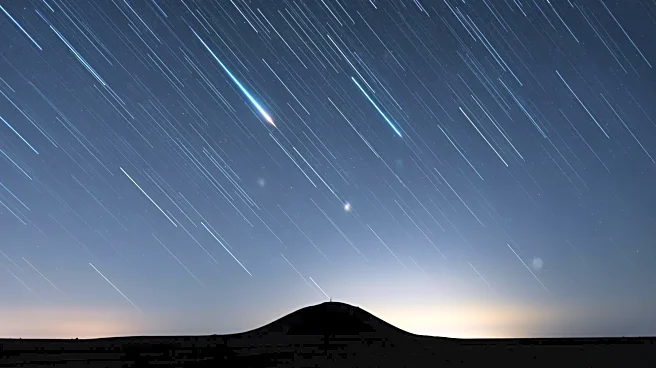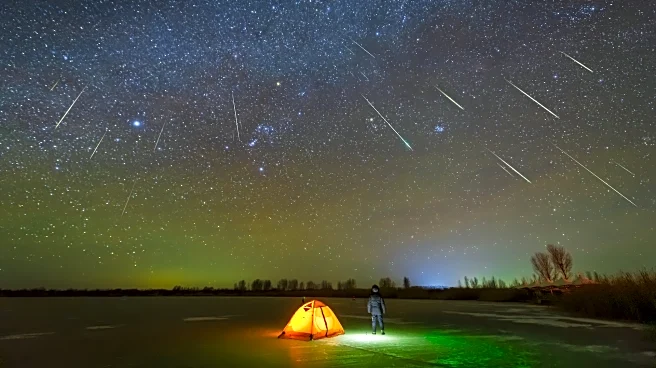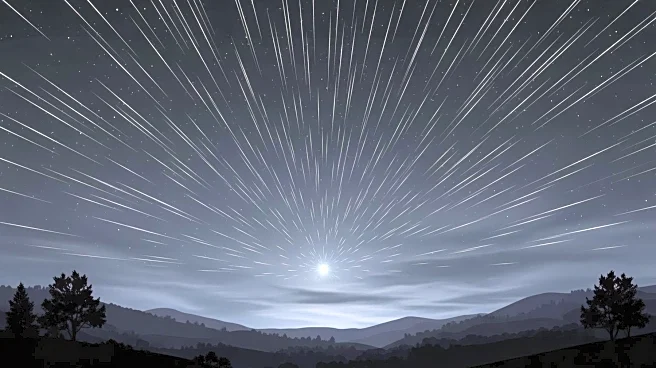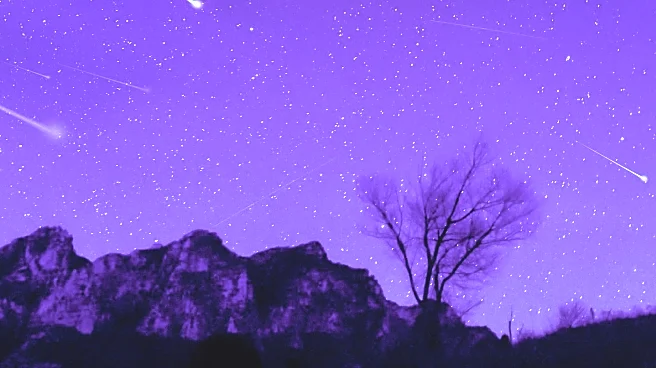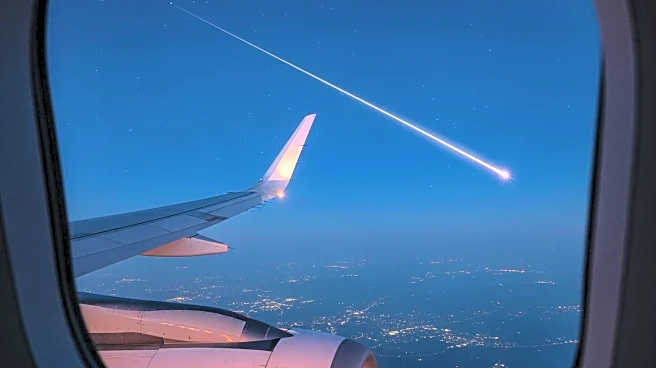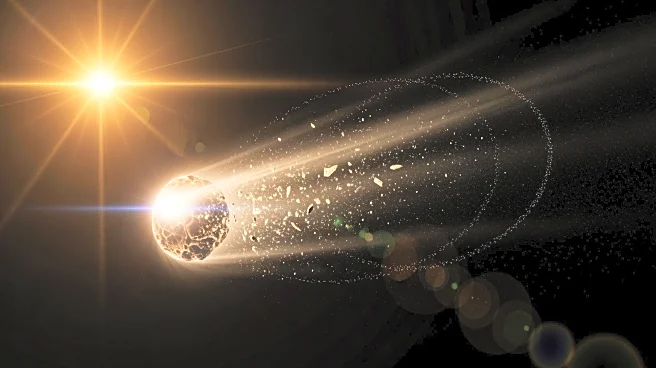What's Happening?
The Leonid meteor shower, a highly anticipated annual celestial event, is set to peak in November 2025. This year, the shower is expected to be less intense, with predictions indicating only 5 to 10 meteors
per hour visible in North America. The meteors originate from debris left by Comet Tempel-Tuttle, which orbits the Sun every 33 years. Despite the lower intensity, the Leonids are known for their fast-moving meteors, traveling at speeds of 45 miles per second, creating bright, long-lasting trails. The best viewing time is just before dawn on November 18, with optimal conditions requiring clear skies and minimal light pollution.
Why It's Important?
The Leonid meteor shower is significant for both amateur and professional astronomers, offering a chance to observe fast-moving meteors that produce bright trails. Although the 2025 shower is expected to be less intense, it still provides an opportunity for stargazers to witness a natural spectacle. The event highlights the periodic nature of celestial phenomena and the impact of cometary debris on Earth's atmosphere. For those interested in astronomy, the Leonids offer a chance to engage with the science behind meteor showers and the movements of comets like Tempel-Tuttle.
What's Next?
As the peak of the Leonid meteor shower approaches, enthusiasts are advised to find locations with clear skies and minimal light pollution for optimal viewing. The moon will be in a narrow crescent phase, reducing interference with the meteor show. Stargazers in light-polluted areas can use apps or websites to locate darker spots nearby. Despite the low activity forecast, patience may reward viewers with sightings of particularly bright meteors. The event serves as a reminder of the unpredictable nature of meteor showers and the ongoing interest in celestial events.
Beyond the Headlines
The Leonid meteor shower underscores the broader cultural and scientific interest in astronomy and celestial events. It highlights the importance of preserving dark skies for astronomical observations and raises awareness about light pollution's impact on stargazing. The event also serves as an educational opportunity, encouraging public interest in space science and the dynamics of cometary debris. As technology advances, tools for observing and predicting meteor showers continue to improve, enhancing the experience for both amateur and professional astronomers.
